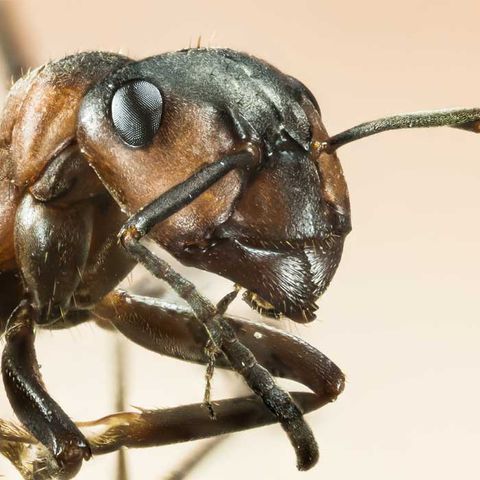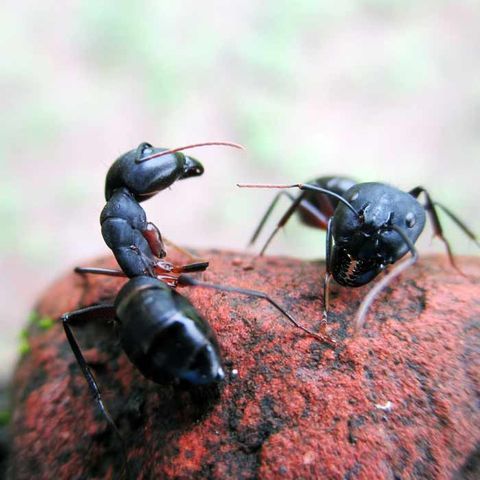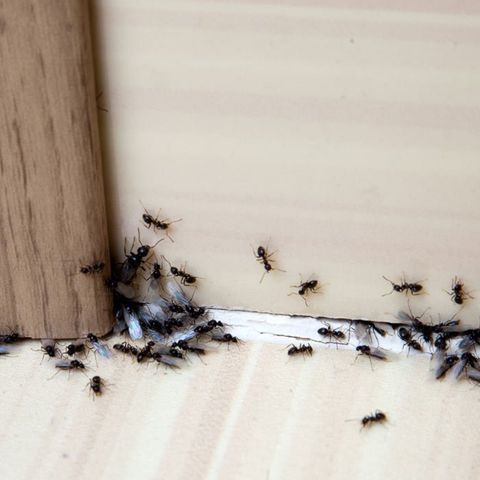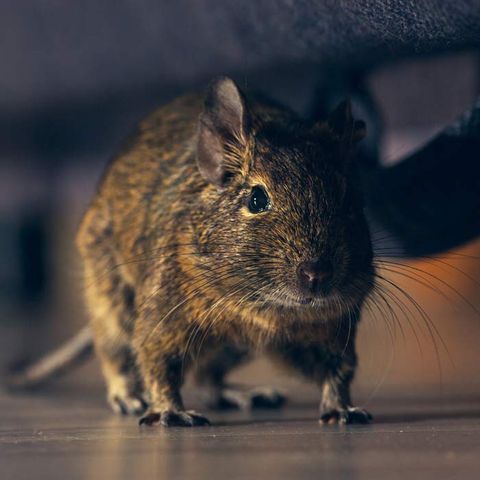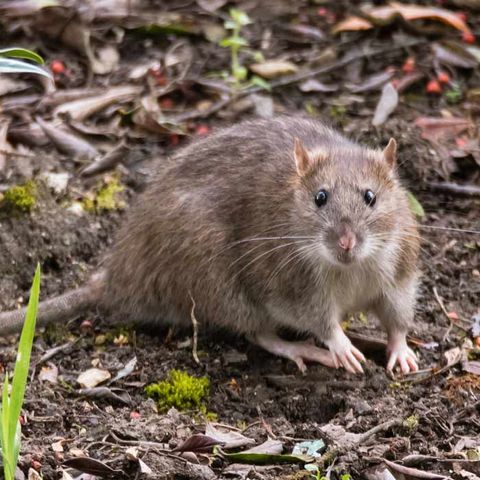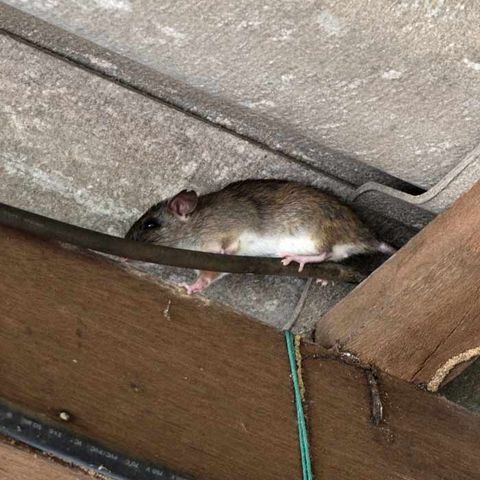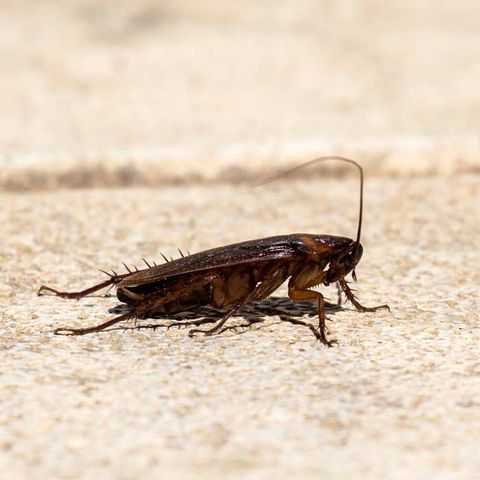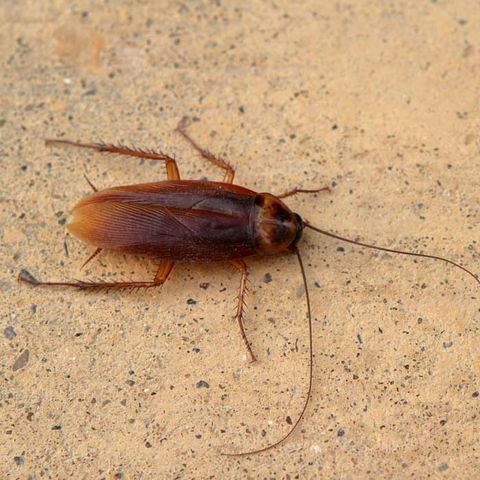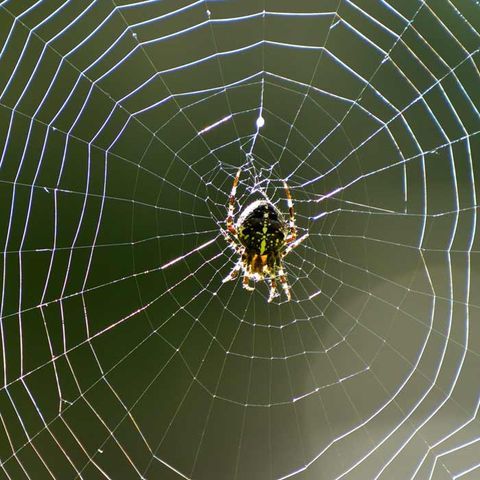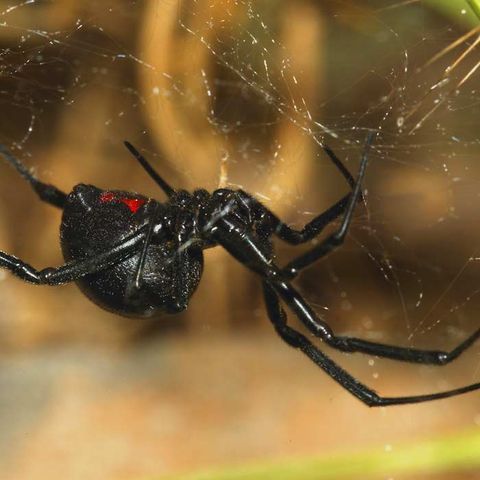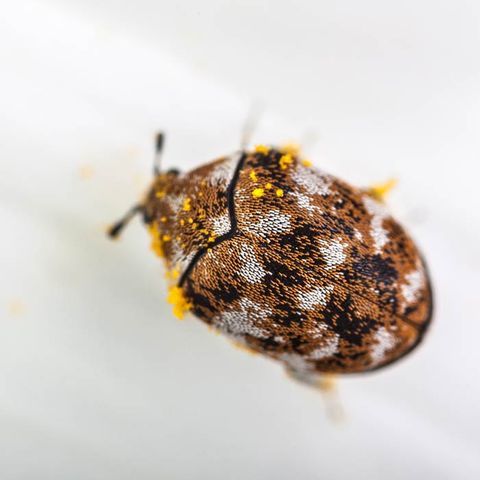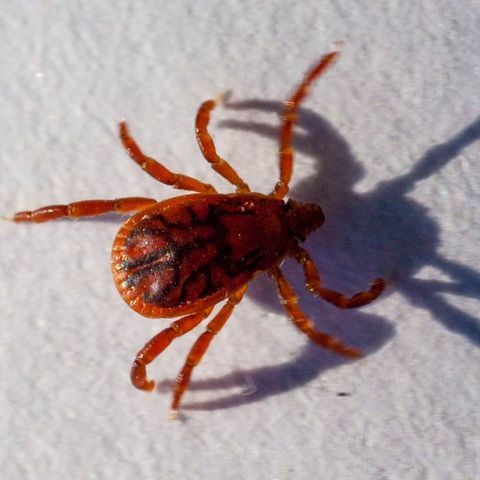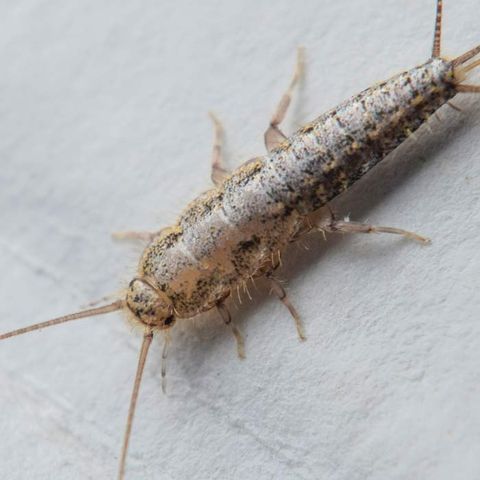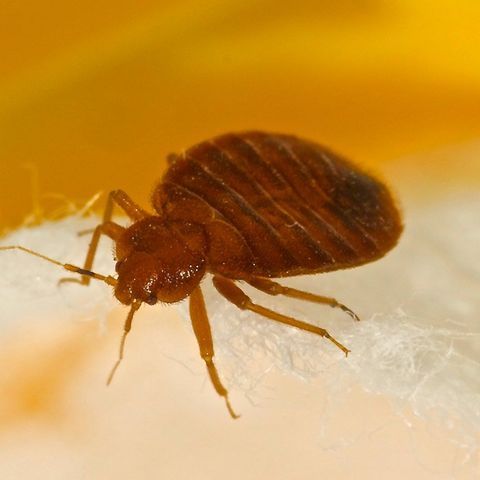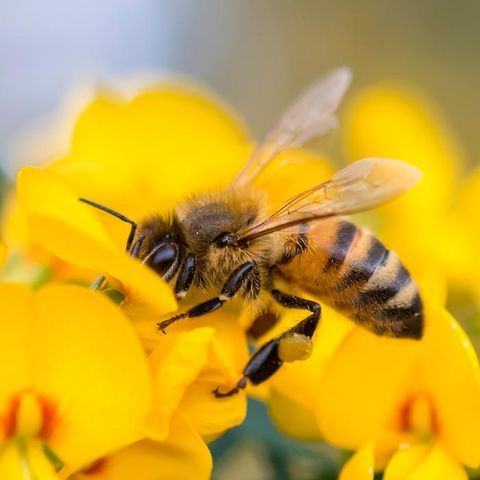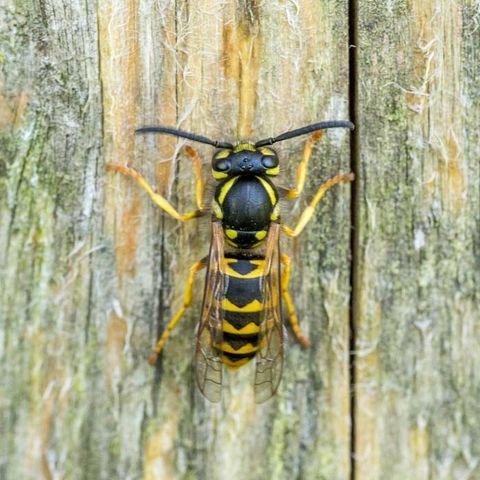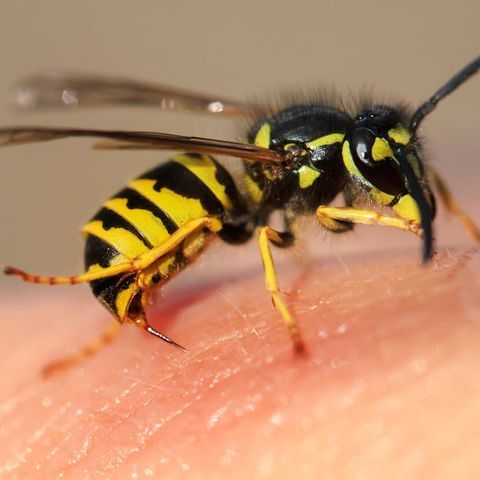Maximum Security for your Children & Pets
IDENTIFY YOUR PESTS
Got a Rodent or Insect Problem? We’re Here to Help.
We have been proudly serving Contra Costa and Alameda County residents since 1953 with our pest control solutions that are child- and pet-friendly.
Argentine Ant
Argentine ants feed on sweets, fresh fruit and buds of some plants. You can find them foraging for sweets and oils in homes. They travel rapidly in distinctive trails along sidewalks, upsides of buildings, along branches of trees and shrubs, along baseboards and under edges of carpets.
Identifying Characteristics: Workers are all the same size, small, 1/8" long and uniformly dull brown.
Carpenter Ant
Carpenter ants feed on dead and living insects, aphid and scale honeydew, juices of ripe fruit – preferably sweet. They travel in loose trails, forage mostly late in the day or at night and prefer moist or humid environments. Although, this species does not feed on wood, they will bore into wood to make nests, sometimes causing serious structural damage.
Identifying Characteristics: These are among the largest of ants and are vicious biters. Workers vary greatly in size from 1/2” to 3/8” in length. They are usually black, but may have some brown coloration. They’re long-legged and move swiftly.
Odorous House Ant
Odorous ants feed on both dead and living insects, favoring aphid and scale honeydew. They travel in both wandering patterns and set trails in homes, foraging primarily for sweets. Common trails are along branches of trees, foundations, sidewalks, baseboards and edges of carpets. When disturbed, they become erratic with their abdomens raised in the air.
Identifying Characteristics: These are among the largest of ants and are vicious biters. Workers vary greatly in size from 1/2” to 3/8” in length. Usually they are black, but may have some brown coloration. They’re long-legged and move swiftly.
House Mouse
Mice not only live inside, but outside near foundations – in shrubbery, weeds, crawlspaces, basements or garages. They eat almost anything, but prefer cereal grains, seeds or sweet material requiring very little water to survive. When it gets colder, they move inside nesting closer to a food supply. These nests are found in many places, including in walls, ceiling voids, storage boxes, drawers, under major appliances or within the upholstery of furniture.
Identifying Characteristics: The adult house mouse is small and slender, about 1-2 inches long, excluding tail. It has large ears, a pointed nose and small eyes. The tail is as long as the head and body combined. The fur color varies, but it is usually a light gray or brown, but could be darker shades.
Norway Rats
These rats are sometimes called brown or sewer rats. They are stocky burrowing rodents that are larger than roof rats. Their burrows are found along building foundations, beneath rubbish or woodpiles, and in moist areas in and around gardens and fields. Nests can be lined with shredded paper, cloth or other fibrous material. When Norway rats invade buildings, they usually remain in the basement or ground floor.
Identifying Characteristics:
The Norway rat is large, robust and between 7-18 ounces. The tail is shorter than the body, dark above and pale below.
Roof Rats
The roof rat is a climber, commonly nesting in areas above the ground: trees, vines, attics, ceiling voids or in voids along the roofline. These rats enter your home much like squirrels. As their population grows they will nest in underground burrows. They prefer seeds, nuts, fresh vegetables and fruits, but will eat meat and grain products. They become sexually mature in 2-3 months, with 4-6 liters per year, 4-8 pups per litter.
Identifying Characteristics: Adults weigh about 5-9 ounces, 7-10 inches long. The tail is longer than the head and body combined. They have smooth (not shaggy) fur, large ears and a pointed nose.
American Cockroach
Found in dark, moist areas, such as around bathtubs, clothes hampers, sewers and basement corners. Also, wherever food is prepared and stored.
Identifying Characteristics: The largest of the common species, growing to a length of 1-1/2" or more. Reddish-brown with a yellow border on the back of the pronotum. The wings of the male extend beyond the tip of the abdomen, while the female’s wings are about the same length as the abdomen.
German Cockroach
This is the most common roach found in homes across the United States. It breeds throughout the year and favors a humid atmosphere with an average temperature of 70 degrees.
Identifying Characteristics:
Adults are about 1/2″ long, brown with two dark streaks on the thorax. The female is darker in color with a broader, more rounded posterior. Both sexes have wings as long as their bodies.
Oriental Cockroach
Found in all parts of the United States. They’re most common in high-moisture situations, especially around decaying organic matter. They’re most common in late spring or early summer.
Identifying Characteristics: Very dark brown or black. Male is about 1-1/4" long while the female reaches only 1″ in length. The female has functionless stubs. The male’s wings cover about 3/4 of the abdomen. Neither sex flies. Females are broader and heavier.
Spider
Spiders can be found in both damp and warm, dry parts of buildings depending on the species. Most species hide in cracks, darkened areas or in shelter they make from silk.
Identifying Characteristics: Spiders have eight legs with no wings or antennae. Their bodies have only two sections – a fused head, thorax and an abdomen. All spiders have a pair of jaw-like structures with a hollow, claw-like fang at the end.
Black Widow
The black widow spider is the most common and harmful spider in California. Venom from its bite can cause reactions ranging from mild to painful and serious, but death is very unlikely and many symptoms can be alleviated if medical treatment is obtained. They and their associated webs usually are found in dark, dry, sheltered, relatively undisturbed places, such as among piles of wood, rubbish or stones, in culverts, hollow stumps and old animal burrows. They can also be found in garages, sheds, barns, crawlspaces, utility meter boxes and outhouses, and sometimes among plants.
Identifying Characteristics:
The typical adult female black widow has a shiny black body, slender black legs and a red or orange mark in the shape of an hourglass on the underside of the large, round abdomen. The body, excluding legs, is 5/16” to 5/8” long.
Carpet Beetles
Most common in the northern states, this beetle infests carpets and feeds on the fabric. It also feeds on animal products that are left undisturbed, such as wood, leather, furs, etc.
Identifying Characteristics: These beetles are small and oval in shape. They’re grayish black in color with a varied pattern of white and orange scales on the back. An orange-red band of scales runs down the middle of the back.
Brown Dog Tick
Most often, these are found in the ears, between the toes and on the backs of dogs. After feeding, they retire to molding, baseboards, around window-cord pulleys, any protected openings.
Identifying Characteristics: Adult ticks are flat, about 1/8″ long and uniformly red-brown with tiny pits scattered over the back. Unlike the male, the female enlarges after feeding to about 1/2″ long and 1/4″ wide. The enlarged portion of the body becomes gray-blue to olive in color.
Earwig
Earwigs are active at night and hide in cracks or underneath objects during the day. Most species scavenge on dead animal and plant material. Eggs are laid in underground burrows.
Identifying Characteristics: Earwigs are most readily recognized by the forceps at the end of the abdomen. Species range from 1/2″ to 1″ in length, and from light reddish-brown to jet-black in color. Some species are marked with stripe or bands on body and legs.
Flea
Most common during the summer, especially when homes are reoccupied after vacation. Most common hosts are cats, dogs, man and a wide variety of animals.
Identifying Characteristics: Fleas are extremely small, averaging 2 to 4 mm in length. The body is flattened vertically and is covered with spines which project backward. They are wingless but have long, powerful legs for jumping great distances.
Silverfish
Among the most common insects in the home. They eat paper, fabrics and get into cereals.
Identifying Characteristics:
Bodies are long, slender and flattened, broad at the front and tapering to the rear. Antennae are long and slender. Three long, slender appendages protrude from the rear. They’re wingless and the body is about 12″ long.
Bedbugs
Bedbugs are mainly active at night, but are not exclusively nocturnal. They usually feed on their hosts without being noticed.
Identifying Characteristics:
Adult bedbugs are light brown to reddish-brown, flattened, oval-shaped and have no hind wings. The front wings are vestigial and reduced to pad-like structures. Bedbugs have segmented abdomens with microscopic hairs that give them a banded appearance. Adults grow to 4-5 millimeters (0.16”-0.20”) long and 1.5-3 mm (0.059”-0.118”) wide.
Honey Bee
Honeybees live year-round, and can be observed as a giant swarm migrating, or as five to 20 bees buzzing around a wall, eave, chimney or other structural openings. In warm, dry areas, they may show up for water. New honeybee swarms consist of 4,000 to 6,000 bees. An active hive generally has 10,000 to 50,000 bees and 20 to 80 lbs. of honey.
Identifying Characteristics:
They are amber to brown translucent alternating with black stripes. Exact pattern and coloration varies depending on strain/breed. Their size ranging from 1/2” to 3/4”.
Yellow Jackets
Western yellow jackets tend to defend their nests vigorously when disturbed. Defensive behavior increases as the season progresses and colony populations become larger while food becomes scarcer.
Identifying Characteristics: These wasps tend to be medium-sized and black with jagged bands of bright yellow or white on the abdomen and have a very short, narrow “waist,” the area where the thorax attaches to the abdomen.
Wasps
The names “wood wasp” and “horntail” describe several kinds of wood-boring insects. Of greatest concern are the large, non-stinging wasps that normally are attracted to and complete their life cycles in newly dead or dying conifer trees. Timber salvaged from these trees can be processed into infested lumber. This can lead to adult wasps emerging in recently completed buildings or structures.
Although these insects are extremely annoying, they aren’t harmful to humans or structures. They attack only trees and won’t bore into wood in buildings or furniture.
Identifying Characteristics: The dozen species of wood wasps in California look similar. They are large insects, generally 1” or longer and wasp-like in appearance, but have an elongated, cylindrical body without a noticeable constriction or “waist.” They often are black or metallic dark blue or a combination of black, red and yellow. They make a noisy buzz when flying.
Quick Links
Contact Information
Address: P.O. Box 1255 Alamo, CA 94507
Phone Numbers:
Business Hours:
- Mon - Fri
- -
- Sat - Sun
- Closed




California License #PR-6065

